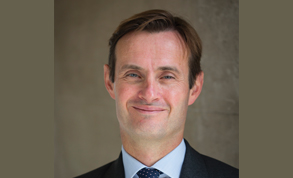Recovery fund threshold increases
 The ERF is allocated to systems in England to help them restore pre-pandemic activity. It covers the marginal costs of providing additional activity needed to tackle waiting lists. Despite systems increasing their activity levels in recent months and a fall in the number waiting more than a year, overall, the waiting list has risen to 5.3 million patients.
The ERF is allocated to systems in England to help them restore pre-pandemic activity. It covers the marginal costs of providing additional activity needed to tackle waiting lists. Despite systems increasing their activity levels in recent months and a fall in the number waiting more than a year, overall, the waiting list has risen to 5.3 million patients.
However, in a letter sent to the service, the national bodies said the NHS has made excellent progress in restoring elective care, while at the same time dealing with the demand for urgent and emergency care. Though they had to cope with infection control measures and the uncertainties thrown up by Covid, many areas were now delivering close to or greater than pre-pandemic levels of planned care, the letter said.
With this in mind, the letter – from chief financial officer Julian Kelly (pictured) and national emergency and elective care director Pauline Philip – said the threshold for accessing the ERF would be increased from 85% to 95% of 2019/20 activity levels.
ERF will now be paid at 100% of tariff above the 95% level, and 120% of tariff above 100% of 2019/20 activity. ‘The ERF will continue to be earned on a system basis to encourage systems to continue to use their capacity and resources as flexibly as possible across organisations to maximise recovery activity. Use of the independent sector to help achieve this remains an integral part of the arrangements,’ it added.
The introduction of the new threshold has been backdated to 1 July, which may affect some system plans, which were based around the previous 85% of baseline activity.
The letter did not outline any of the financial arrangements for the second half of 2021/22 (H2) – it said NHS England and NHS Improvement would seek to provide the funding position ‘at the earliest possible opportunity’.
However, it did set out some priorities for H2 on outpatients and tackling the longest waits. Minimum standards would be established for outpatient transformation in H2 as part of the High Volume, Low Complexity programme. These standards have been prompted by an increase in the number of ‘advice and guidance’ interventions given per 100 outpatient first attendances, as well as the proportion of outpatients discharged to patient-initiated follow up.
Priority will be given to cutting the longest waits during H2. Local systems have been asked to work with regional and national teams during the second quarter of 2021/22 to understand their long waits, which will in turn determine the national approach for H2.
The chief executive of NHS Providers, Chris Hopson, said that, with trusts hitting the elective recovery targets earlier than expected, it was understandable that the government wished to look again at the threshold levels.
But he added that it was important to be aware of the context in which this change is being made.
‘First, trust leaders have been flagging for some time that the rate of backlog activity will drop in line with frontline staff taking much needed annual leave over the summer break. Secondly, we know increased hospital admissions from rising Covid-19 infections rates will have an impact on trusts’ ability to clear the backlog of care.’
He added there were backlogs in mental health and for procedures performed by community trusts. Neither are able to access recovery funding, and this should be reviewed urgently.
‘Flexibility to take account of this context is vital. Trust leaders want the thresholds be realistic and achievable to ensure the finding required to reduce care backlogs continues to flow to the frontline as needed.’
Related content
We are excited to bring you a fun packed Eastern Branch Conference in 2025 over three days.
This event is for those that will benefit from an overview of costing in the NHS or those new to costing and will cover why we cost and the processes.